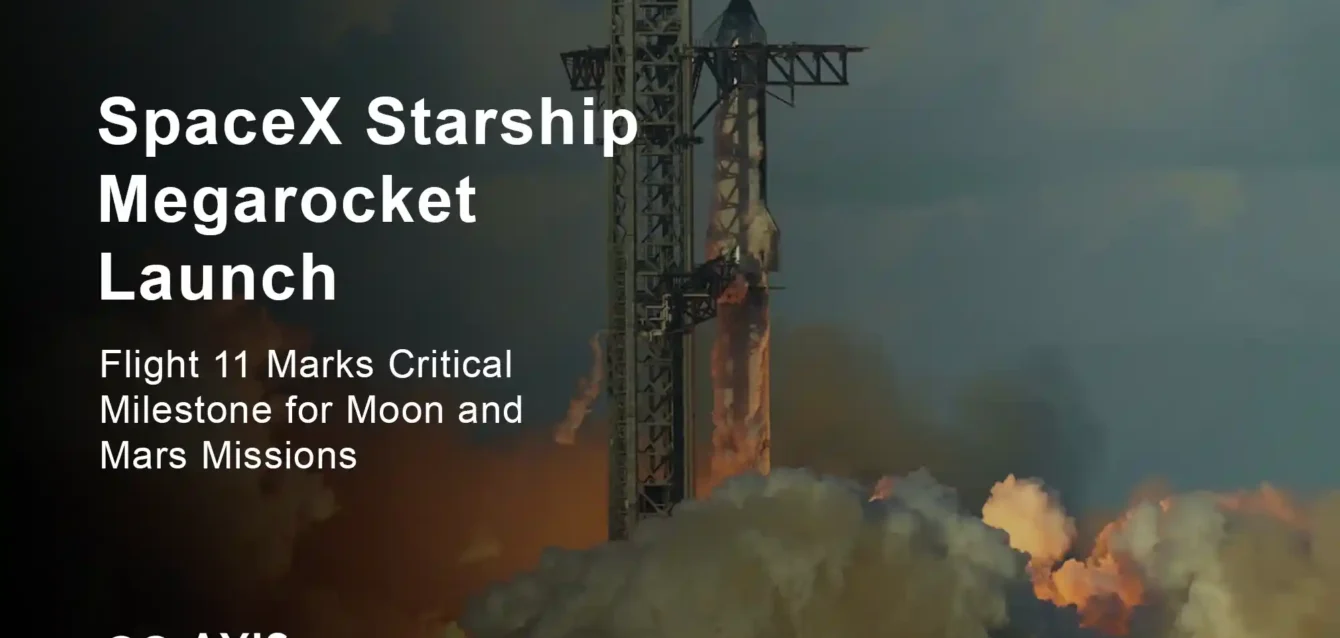SpaceX Starship Megarocket Launch
SpaceX’s Starship megarocket successfully completed its 11th test flight on October 13, 2025, marking a pivotal achievement for the world’s most powerful launch vehicle ever built. The hour-long mission demonstrated crucial capabilities including satellite deployment simulation, in-space engine relighting, and controlled splashdown maneuvers that bring humanity one step closer to returning astronauts to the Moon and eventually establishing a presence on Mars.
Flight 11 Success After Rocky 2025 Development Year
The latest test flight represents a significant turnaround for SpaceX’s Starship program, which experienced substantial setbacks earlier in 2025. Flight 11 launched at 7:15 PM EDT from Starbase in South Texas, with the 403-foot-tall (123-meter) vehicle thundering into the evening sky powered by 33 Raptor engines generating over 17 million pounds of thrust at liftoff.
The mission achieved all primary objectives. The Super Heavy booster separated as planned approximately 2 minutes and 45 seconds after liftoff, executing a controlled splashdown in the Gulf of Mexico about 6.5 minutes into flight. Meanwhile, the upper stage spacecraft, designated Ship 38, continued into space where it successfully completed a series of complex test objectives before making its own controlled splashdown in the Indian Ocean one hour and six minutes after launch.
According to CNN’s coverage of Flight 11, SpaceX communications manager Dan Huot announced as employees at Mission Control cheered the successful conclusion: “Hey, welcome back to Earth, Starship.” This marked only the second clean test run for Starship’s Version 2 iteration, following a successful mission in late August 2025.
Version 2 Challenges and the Path Forward
The current Starship configuration, known as Version 2 or V2, experienced a turbulent development period throughout 2025. Three consecutive test flights between January and May resulted in premature failures, with spacecraft either exploding mid-flight or losing control during descent. These incidents created debris that fell over populated Caribbean islands, including the Turks and Caicos and Bahamas, drawing criticism from international governments and raising concerns about public safety.
Most dramatically, a Ship 36 spacecraft exploded on the test stand at SpaceX’s Massey facility in June 2025 during a planned six-engine static fire. Preliminary analysis attributed the explosion to a failed composite-overwrapped pressure vessel in the nose section, which ruptured and ignited the methane and liquid oxygen propellants. While no personnel were injured, the incident caused substantial damage to testing infrastructure and forced SpaceX to pause operations for comprehensive safety reviews.
Despite these setbacks, SpaceX maintained an aggressive testing cadence. The company’s iterative development philosophy emphasizes rapid prototyping, frequent testing, and learning from failures. This approach contrasts sharply with traditional aerospace development, where years of design work and analysis precede first flights. SpaceX founder and CEO Elon Musk has repeatedly stated that the goal is not to avoid failures during testing, but rather to fail quickly, understand the root causes, and implement improvements rapidly.
Flight 11 serves as the final mission for Version 2 hardware. SpaceX has already begun constructing Version 3 (V3) Starship prototypes, which will incorporate lessons learned from the V2 testing campaign along with significant design improvements.
Technical Achievements During Flight 11
The Flight 11 mission profile included several critical test objectives designed to advance Starship’s operational capabilities:
Satellite deployment demonstration: Ship 38 successfully deployed eight mock Starlink satellites during its orbital coast phase. While these were non-functional mass simulators rather than operational communications satellites, the test validated Starship’s payload deployment mechanisms and procedures. This capability is essential for SpaceX’s plans to use Starship for deploying future generations of its Starlink satellite internet constellation, which currently comprises thousands of satellites launched primarily aboard Falcon 9 rockets.
In-space engine relight: One of the mission’s most significant milestones involved relighting a Raptor engine while in the vacuum of space. This seemingly straightforward maneuver represents a complex technical achievement, as rocket engines must restart reliably in microgravity conditions with propellants behaving differently than during ground or atmospheric operations. Successful engine relighting in space is essential for missions requiring multiple propulsive burns, including orbital insertion, orbital transfer, and landing maneuvers on the Moon or Mars.
Dynamic landing maneuvers: During its fiery reentry through Earth’s atmosphere, Ship 38 executed what SpaceX describes as “dynamic banking” maneuvers. The spacecraft intentionally rolled and pitched during descent, testing the limits of its heat shield and flight control systems. These aggressive maneuvers simulate potential off-nominal scenarios and demonstrate the vehicle’s ability to maintain control under extreme conditions.
Controlled water landing: Both the Super Heavy booster and Ship upper stage completed controlled splashdown landings in their respective target zones. While SpaceX did not attempt to recover either vehicle, According to Space.com’s analysis, detailed coverage of Flight 11’s technical achievements provided by SpaceX spokesperson Dan Huot during the company’s launch webcast validated the flight control algorithms and provided crucial data for future landing attempts on solid ground.
Starship’s Role in NASA’s Artemis Program
The success of Flight 11 carries substantial implications for NASA’s Artemis program, which aims to return American astronauts to the lunar surface for the first time since the Apollo 17 mission in 1972. NASA has selected Starship as the Human Landing System (HLS) for Artemis III, currently scheduled for 2027, making SpaceX’s development progress directly tied to America’s lunar ambitions.
NASA Acting Administrator Sean Duffy praised the test flight’s progress: “Another major step toward landing Americans on the Moon’s south pole. The progress SpaceX demonstrated with today’s Starship test is critical for our Artemis missions.”
However, Starship’s development timeline has sparked growing concerns about whether the vehicle will achieve operational readiness in time to support the 2027 landing date. Former NASA Administrator Jim Bridenstine, who served during President Trump’s first term, characterized the Artemis III architecture as “extraordinarily complex” during recent Congressional testimony.
The complexity stems from Starship’s operational requirements for lunar missions. Unlike Apollo’s approach, where the entire Saturn V rocket stack launched directly toward the Moon, Starship requires multiple launches and in-orbit refueling to complete a lunar landing mission. Here’s how the process would work:
- A Starship HLS variant launches to low Earth orbit but lacks sufficient propellant to reach the Moon
- Multiple Starship “tanker” variants launch sequentially, each carrying only propellant
- The tankers rendezvous with the HLS and transfer their propellant through orbital refueling operations
- Once fully fueled, the HLS departs for lunar orbit
- NASA’s Orion spacecraft, launched aboard the Space Launch System rocket, delivers astronauts to lunar orbit
- Astronauts transfer from Orion to Starship HLS
- Starship descends to the lunar surface
- After surface operations, Starship returns astronauts to Orion
- Orion returns crew to Earth
Nobody knows precisely how many refueling flights will be required. Early estimates suggested 10 to 12 tanker launches might suffice, though some analyses indicate the number could reach 16 or even higher depending on final vehicle performance. Each refueling operation represents an unprecedented technical challenge that has never been attempted in space.
The orbital refueling technology required for this architecture remains undemonstrated. SpaceX must develop reliable docking mechanisms, propellant transfer systems, and cryogenic fluid management capabilities that function in microgravity. Liquid oxygen and liquid methane propellants must be maintained at extremely cold temperatures throughout extended periods in space, requiring sophisticated thermal management systems.
The Growing Space Race with China
While NASA grapples with Starship development uncertainties, China’s space program continues advancing toward its own lunar landing objectives. The China National Space Administration has announced plans to land taikonauts on the Moon before 2030, potentially ahead of Artemis III.
Bill Nye, the Science Guy and CEO of The Planetary Society, stated bluntly during recent public appearances: “The China National Space Administration will almost certainly walk on the moon in the next five years.”
China’s lunar architecture differs significantly from NASA’s approach. Rather than relying on a single super-heavy-lift vehicle like Starship, China plans to use its Long March 10 rocket, currently under development. The Chinese approach appears more conservative from a technical standpoint, requiring fewer unprecedented capabilities but also offering less long-term reusability and cost savings.
The geopolitical implications of the lunar race extend beyond symbolic national prestige. The Moon’s south pole, targeted by both programs, contains permanently shadowed craters believed to hold substantial water ice deposits. These resources could prove crucial for sustainable lunar operations, potentially providing drinking water, breathing oxygen, and hydrogen fuel for spacecraft. Establishing presence and demonstrating capability to utilize these resources could influence international space policy and future territorial considerations under the Outer Space Treaty.
Engineering Marvel: Understanding Starship’s Scale and Power
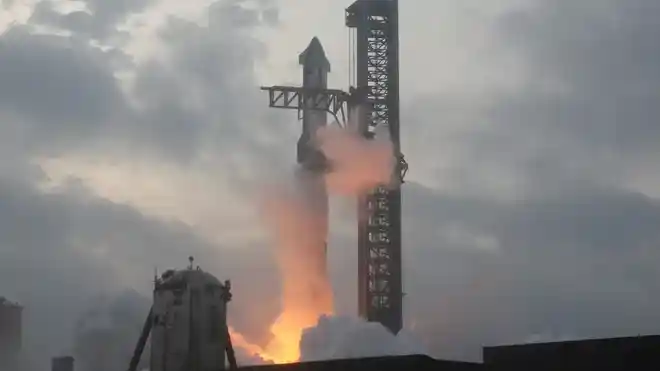
To truly appreciate Starship’s significance, one must understand the engineering achievements it represents. At 403 feet (123 meters) tall when fully stacked, Starship towers above every rocket system that came before it. For comparison, NASA’s Space Launch System, currently the second most powerful operational rocket, stands 322 feet (98 meters) tall and produces 8.8 million pounds of thrust, just over half of Starship’s full output.
The vehicle consists of two stages, both designed for full reusability, a goal that has eluded rocket engineers since the dawn of spaceflight:
Super Heavy Booster: The first stage booster measures 230 feet (70 meters) tall and 30 feet (9 meters) in diameter. It uses 33 Raptor engines, making it the only rocket in history to employ such a large engine cluster. The booster’s propellant tanks hold approximately 7.9 million pounds of liquid oxygen and liquid methane. During liftoff, all 33 engines ignite in a carefully choreographed sequence, producing over 17 million pounds of thrust that accelerates the entire stack upward.
Starship Spacecraft: The upper stage stands 165 feet (50 meters) tall with the same 30-foot diameter. It employs six Raptor engines—three optimized for sea-level operation and three vacuum-optimized variants with larger nozzles. The spacecraft serves dual purposes: acting as the second stage during launch from Earth and operating as an independent spacecraft for orbital, lunar, and interplanetary missions.
When fully fueled, the complete Starship stack weighs approximately 11.7 million pounds (5,300 metric tons), making it by far the heaviest object humanity has ever launched into space. Yet despite this enormous mass, the vehicle is designed to return to Earth intact, land precisely at the launch site, undergo rapid refurbishment, and fly again.
The Revolutionary Raptor Engine Family
Starship’s performance capabilities derive primarily from its Raptor engines, which represent one of the most significant advances in rocket propulsion in decades. Unlike SpaceX’s earlier Merlin engines that power Falcon 9 and Falcon Heavy rockets (burning refined kerosene and liquid oxygen), Raptor uses liquid methane and liquid oxygen in a “methalox” propellant combination.
This fuel choice carries profound implications for SpaceX’s Mars ambitions. Methane can potentially be manufactured on Mars using the Sabatier process, which combines carbon dioxide from the Martian atmosphere with hydrogen to produce methane and water. This in-situ resource utilization capability could enable Starship to refuel on Mars for its return journey to Earth, eliminating the need to carry return propellant from Earth and dramatically reducing mission mass and cost.
The Raptor engine employs a full-flow staged combustion cycle, making it only the third operational rocket engine design in history to use this extremely efficient but complex architecture. In this cycle, separate turbopumps drive fuel-rich and oxygen-rich preburners that power the turbopumps themselves. The preburners generate hot gas that is then injected into the main combustion chamber, where the fuel and oxidizer mix and burn at extraordinary efficiency.
SpaceX has developed three generations of Raptor engines, each representing substantial improvements:
Raptor 1 (R1): The first operational version produced approximately 185 metric tons of thrust (407,850 pounds-force). Raptor 1 validated the full-flow staged combustion cycle concept and demonstrated the viability of methalox propellants. These engines powered early Starship test flights including the first integrated launch attempt in April 2023.
Raptor 2 (R2): Introduced in late 2021, Raptor 2 delivers 230 metric tons of thrust (507,050 pounds-force), a 24% increase over R1. The engine achieved this performance boost while reducing mass by approximately 20%, improving the crucial thrust-to-weight ratio. Raptor 2 also simplified the design by reducing part count and external plumbing. These engines currently power Starship’s Version 2 hardware, including Flight 11.
Raptor 3 (R3): Unveiled in 2024, Raptor 3 represents a dramatic leap forward. The engine produces 280 metric tons of thrust (617,300 pounds-force), 51% more than R1 and 22% more than R2. Yet Raptor 3 weighs only 1,525 kilograms (3,362 pounds) without installation hardware, making it 36% lighter than R1 and 7% lighter than R2. This massive improvement in thrust-to-weight ratio (exceeding 180:1) ranks among the highest ever achieved for rocket engines.
Perhaps most impressively, Raptor 3 eliminates the external heat shield required by earlier versions through improved internal cooling pathways and design integration. The engine internalizes numerous secondary flow paths and components that were external on R2, creating a dramatically cleaner external appearance while improving reliability by reducing potential failure points. Elon Musk has indicated that future variants could achieve over 300 metric tons of thrust, with ongoing refinements targeting even higher specific impulse (a measure of propellant efficiency).
SpaceX manufactures Raptor engines at its Hawthorne, California headquarters using advanced techniques including extensive 3D metal printing. This additive manufacturing approach allows complex internal geometries impossible with traditional machining, integrating formerly discrete components into single printed structures. The “no part is the best part” philosophy minimizes assembly requirements, improves structural integrity, and accelerates production rates.
Current Raptor production capacity exceeds the rate at which SpaceX can conduct test flights, ensuring adequate engine availability for the aggressive testing campaign planned for coming years. As flight rates increase, SpaceX aims to demonstrate the engines’ designed reusability by flying individual Raptors many times with minimal refurbishment.
Operational Recovery and Reusability Ambitions
While Flight 11 concluded with controlled splashdowns rather than recovery attempts, SpaceX’s ultimate goal envisions both Starship stages returning to the launch site for rapid reuse. The company achieved a dramatic proof of concept during Flight 5 in October 2024, when the Super Heavy booster steered itself back to the launch tower and was caught in mid-air by mechanical arms nicknamed “chopsticks.”
This “catch” maneuver involves the booster performing a boost-back burn to reverse its trajectory, reentering the atmosphere, executing a landing burn to slow its descent, and finally positioning itself between the tower’s catching arms. The tower’s arms close around the booster at hard points designed into its structure, suspending the 230-foot-tall, 200+ ton vehicle in mid-air within seconds of its 33 engines shutting down.
Traditional rocket landings, as demonstrated by Falcon 9 boosters, require dedicated landing legs that add mass and complexity to the vehicle. By eliminating landing legs and using the launch tower infrastructure to catch returning boosters, Starship achieves mass savings that translate directly into increased payload capacity. The captured booster can then be inspected, serviced, and repositioned on the launch mount for its next flight without ever being lowered to the ground, potentially enabling extremely rapid turnaround times.
SpaceX has not yet attempted to catch the Starship upper stage, though this represents the long-term plan. The spacecraft’s return profile differs significantly from the booster’s trajectory. After completing its mission in orbit or beyond, Starship must survive reentry through Earth’s atmosphere from orbital velocities exceeding 17,000 miles per hour.
The spacecraft enters the atmosphere at a controlled 60-degree angle, presenting its belly covered with ceramic heat shield tiles to the intense thermal environment. During peak heating, portions of the heat shield glow white-hot while temperatures reach thousands of degrees. The spacecraft relies on four aerodynamic flaps—two forward canards and two aft flaps—to maintain control and manage its descent trajectory.
As Starship approaches its landing site, it performs a dramatic “landing flip” maneuver, transitioning from horizontal to vertical orientation. Three Raptor engines ignite, drawing propellant from dedicated “header tanks” positioned in the nose and aft sections specifically for landing operations. These header tanks remain protected from heating and sloshing during reentry, ensuring reliable propellant supply for the critical landing burn.
After transitioning to vertical, Starship uses its engines’ gimbaling capability and aerodynamic control to slow its descent and position precisely above the launch tower. Like the booster, the spacecraft would be caught by mechanical arms rather than landing on legs, completing the full reusability cycle.
Future Starship Variants and Capability Evolution
Flight 11 marks the conclusion of testing for Starship Version 2 hardware. SpaceX has already begun constructing Version 3 (V3) vehicles that incorporate substantial improvements based on lessons learned from the V2 testing campaign:
Increased height: V3 stands approximately 408 feet (124.4 meters) tall, about 5 feet taller than V2. While this might seem modest, the additional height provides increased propellant volume that translates directly into performance improvements.
Raptor 3 engines: V3 will fly with Raptor 3 engines, dramatically improving thrust-to-weight ratio and reliability. The Super Heavy booster will continue using 33 engines, while the Starship spacecraft will employ the same six-engine configuration (three sea-level, three vacuum variants).
Enhanced heat shield: Lessons from V2 reentry experiences, including several incidents where heat shield tiles detached during ascent or reentry, inform V3’s thermal protection system improvements. The new design focuses on improved tile adhesion, better gap fillers between tiles, and more robust attachment mechanisms.
Structural optimizations: V3 incorporates refined propellant tank structures, improved thrust structures, and weight-reduction measures throughout the vehicle based on analysis of actual flight stresses experienced during V2 testing.
Beyond V3, SpaceX has revealed plans for Version 4 (V4), expected to debut around 2027. V4 represents a more dramatic evolution:
Substantially taller: V4 may reach 466 feet (142 meters) in height, towering 63 feet above even V3. This increased size enables significantly greater propellant capacity and payload performance.
Additional engines: V4 is planned to use 42 Raptor engines total—33 on the Super Heavy booster and 9 on the Starship spacecraft (compared to the current 6). The additional engines on the spacecraft provide greater redundancy and enable higher payload masses.
Increased payload capacity: With these improvements, V4 could potentially lift over 200 metric tons to low Earth orbit in fully reusable mode, doubling the current payload target.
These evolutionary improvements follow SpaceX’s successful strategy with Falcon 9, which has undergone continuous refinement over its operational lifetime. The Falcon 9 flying today differs substantially from the vehicle that first launched in 2010, with improvements to engines, structures, landing systems, and recovery capabilities developed incrementally based on operational experience.
Starbase: A Private Spaceport Unlike Any Other
Starship development and testing occurs at Starbase, SpaceX’s private launch facility near Boca Chica, Texas, at the southernmost tip of the state near the Mexican border. The site’s remote location and proximity to the Gulf of Mexico make it ideal for launching massive rockets over water rather than populated areas.
Starbase has evolved rapidly from an empty stretch of beach to a bustling manufacturing and launch complex. The facility includes:
Production facilities: Multiple large buildings house Starship and Super Heavy construction, with various vehicles in different stages of assembly visible simultaneously. SpaceX’s horizontal integration approach allows for extremely rapid construction cycles, with some vehicle stages built in weeks rather than the months or years typical of traditional aerospace manufacturing.
Launch infrastructure: The primary orbital launch mount and tower, nicknamed “Mechazilla,” stands nearly 500 feet tall and includes the mechanical arms used for booster catches. A second orbital launch mount is under construction to enable higher flight rates by supporting multiple vehicles simultaneously.
Test stands: Several test stands support static fire testing of complete boosters and spacecraft before flight, as well as individual engine development testing.
Production and storage tanks: Massive tanks hold the liquid oxygen, liquid methane, nitrogen, and other materials required for vehicle operations.
Mission control: A dedicated control center manages launch operations, flight, and recovery activities.
Starbase’s development has not occurred without controversy. Local residents and environmental groups have raised concerns about the facility’s impacts on surrounding wildlife habitats, particularly critical nesting areas for endangered sea turtles and bird species. The Federal Aviation Administration conducted extensive environmental assessments, resulting in over 75 corrective actions SpaceX must implement to address environmental impacts.
In 2025, the area surrounding Starbase was incorporated as Starbase, Texas, making it one of the newest municipalities in the United States. This incorporation reflects SpaceX’s long-term commitment to the site and the company’s vision for Starbase as a hub for Mars-bound spacecraft operations.
SpaceX is simultaneously developing Starship launch capabilities at other locations. The company is modifying Launch Complex 39A at Kennedy Space Center in Florida, the historic pad from which Apollo moon missions and Space Shuttle flights departed. Launching Starship from Florida’s Space Coast offers advantages for certain mission profiles, particularly those targeting geostationary orbit or interplanetary trajectories, and provides geographic redundancy if Starbase experiences weather or regulatory delays.
Commercial and Government Applications
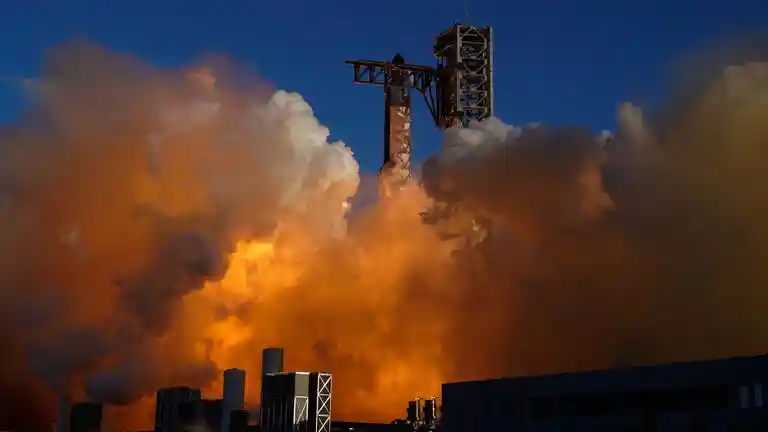
While Mars colonization represents SpaceX’s founding motivation for developing Starship, the vehicle’s enormous payload capacity and potential cost-effectiveness could revolutionize numerous space applications:
Satellite deployment: Starship’s 100+ metric ton payload capacity could deploy entire satellite constellations in single launches rather than requiring dozens of smaller rocket flights. SpaceX plans to use Starship for deploying later generations of its Starlink internet constellation, potentially reducing constellation deployment costs by orders of magnitude.
Space station modules: The spacecraft’s 30-foot diameter cargo bay, wider than any previous launch vehicle, can accommodate enormous payloads that don’t require folding or segmentation. Future space stations could use Starship-launched modules far larger than current International Space Station components, potentially enabling rotating habitats for artificial gravity, expansive research laboratories, or commercial space hotels.
Deep space missions: Scientific missions to asteroids, outer planets, or the edge of the solar system currently face severe mass constraints that force difficult trade-offs between instruments, communications equipment, power systems, and propulsion. Starship’s capacity could enable flagship-class missions with comprehensive instrument suites, larger power generation systems, and substantial propellant for orbital insertion and complex maneuvers.
Rapid global transport: Though not yet pursued actively, SpaceX has proposed using Starship for point-to-point transportation on Earth. A Starship could theoretically fly from New York to Shanghai in under an hour, traveling through space rather than through the atmosphere. While numerous technical, regulatory, and economic challenges would need resolution, the concept illustrates Starship’s potential versatility.
Orbital propellant depots: Beyond supporting lunar missions, orbital refueling infrastructure could enable new architectures for Mars missions, deep space exploration, or maintaining orbital assets. Starship tanker variants could establish permanent propellant depots at strategic orbital locations, functioning as “gas stations in space” that refuel missions headed beyond Earth orbit.
Space manufacturing and resource utilization: Starship’s regular access to orbit with large cargo capacity could finally make space-based manufacturing economically viable. Industries requiring microgravity environments for producing unique materials, pharmaceuticals, or semiconductor crystals could establish orbital facilities supplied and serviced by Starship flights.
The Path to Mars: Starship’s Ultimate Mission
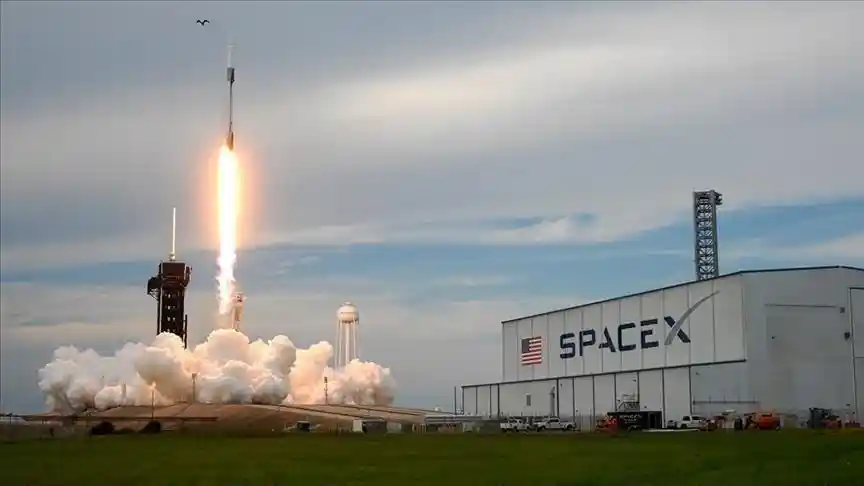
Despite all these applications, Mars colonization remains the driving purpose behind Starship’s development. Elon Musk founded SpaceX in 2002 specifically to make humanity a multi-planetary species, believing that establishing a self-sustaining city on Mars represents an essential backup plan for human civilization.
Current Mars mission concepts envision fleets of Starships departing Earth during favorable launch windows that occur approximately every 26 months when Earth and Mars align optimally. Each spacecraft would carry approximately 100 metric tons of cargo, potentially including habitat modules, life support systems, power generation equipment, mining and manufacturing tools, food supplies, and eventually human passengers.
The mission profile for a Mars journey would involve:
- Launch from Earth and orbital assembly/refueling
- Trans-Mars injection burn to depart Earth orbit
- Approximately 6-month transit to Mars
- Aerocapture using Mars’ atmosphere to slow the spacecraft
- Final propulsive landing on Mars surface
- Extended surface operations (potentially years)
- Propellant production using Martian resources
- Launch from Mars back to Earth during next favorable window
- Return transit to Earth
- Earth atmospheric reentry and landing
Key challenges that must be overcome include:
Propellant production on Mars: While the Sabatier process for manufacturing methane and oxygen from Martian carbon dioxide and water is chemically straightforward, implementing this at industrial scale in the harsh Martian environment presents enormous engineering challenges. SpaceX must develop, test, and deploy reliable systems that can produce hundreds of tons of propellant using only Martian resources.
Life support sustainability: A Mars colony requires closed-loop life support systems that recycle water, oxygen, and other consumables with minimal resupply from Earth. While the International Space Station demonstrates partial recycling capabilities, a Mars settlement needs far higher closure rates to be sustainable.
Radiation protection: Mars lacks Earth’s protective magnetic field and thick atmosphere, exposing surface inhabitants to harmful cosmic radiation and solar particle events. Habitats must provide adequate shielding, possibly using Martian regolith (soil) as radiation shielding mass.
Human physiology adaptation: Long-duration spaceflight and reduced gravity (Mars’ surface gravity is 38% of Earth’s) present numerous health challenges including bone density loss, muscle atrophy, vision changes, and immune system alterations. Understanding and mitigating these effects remains an active area of research.
Self-sufficiency development: Initial Mars settlements will depend heavily on supplies from Earth, but achieving true independence requires developing Martian manufacturing, agriculture, energy production, and resource extraction. This progression from dependence to self-sufficiency represents perhaps the greatest challenge of Martian colonization.
SpaceX’s timeline for Mars missions has proven consistently optimistic. Musk originally suggested sending cargo missions to Mars by 2022 and crewed missions by 2024. While these dates have obviously passed without Mars flights materializing, SpaceX continues making progress toward this long-term goal.
Current thinking suggests uncrewed cargo missions might occur in the late 2020s, with crewed missions potentially following in the 2030s if technical development, economic resources, and regulatory approvals align favorably.
Regulatory Environment and FAA Oversight
SpaceX’s rapid testing approach has occasionally generated tension with regulatory authorities, particularly the Federal Aviation Administration (FAA), which licenses all commercial rocket launches in the United States. The FAA’s mandate focuses on protecting public safety and property, ensuring that launch activities don’t endanger bystanders or damage areas beyond the launch site.
Following the January through May 2025 failures, where Starship debris fell over Caribbean islands, the FAA conducted investigations into each incident. SpaceX led the technical investigations, identifying root causes and implementing corrective actions, with FAA oversight ensuring thoroughness and adequacy of the responses.
Critics have questioned whether the FAA’s approach provides sufficient oversight given the vehicle’s size and the international implications of debris falling in sovereign territories of other nations. The UK government, responsible for overseas territories including Turks and Caicos, expressed concerns and called for enhanced coordination with US authorities.
Mexico’s government has threatened legal action regarding debris that reportedly reached Mexican shores or territorial waters. These international complications illustrate challenges that arise when commercial spaceflight operations have potential impacts across borders.
Proponents of SpaceX’s testing approach argue that the iterative development strategy, while appearing risky, actually improves long-term safety by identifying and addressing failure modes that might not emerge until operational missions if testing were less aggressive. They point to SpaceX’s successful track record with Falcon 9, which has become the world’s most reliable operational rocket through continuous refinement based on operational data.
The regulatory framework for commercial spaceflight continues evolving as the industry matures. Current regulations were largely developed in an era when spaceflight was primarily a government activity conducted by NASA or military services. The emergence of commercial companies conducting unprecedented activities at unprecedented scales may require updated regulatory approaches that balance safety with innovation.
International Perspectives and Global Cooperation
Starship’s development occurs within a broader context of global space activities and international cooperation. While SpaceX operates as a private American company, the implications of its success (or failure) extend worldwide.
International partners contributing to NASA’s Artemis program watch Starship’s progress closely, as delays could impact their own space station components, lunar surface experiments, and astronaut participation in lunar missions. The European Space Agency, Canadian Space Agency, Japanese Aerospace Exploration Agency, and others have investments in Artemis success.
Russia’s space program, once a dominant force and America’s primary partner in human spaceflight through the International Space Station program, has found itself increasingly isolated following geopolitical developments. Russia’s plans for independent lunar missions have faced repeated delays and funding challenges.
India’s space agency has demonstrated impressive capabilities through successful Mars and lunar missions accomplished on remarkably modest budgets. While not currently planning human lunar landings, India’s growing space capabilities position it as an increasingly significant player in space exploration.
Private sector competition extends beyond national boundaries. Blue Origin, founded by Jeff Bezos, develops its New Glenn rocket as a potential heavy-lift competitor to Starship, though with more modest performance targets. Other companies including Rocket Lab, Relativity Space, and numerous startups worldwide pursue various approaches to reducing launch costs and increasing capabilities.
While the Outer Space Treaty of 1967 establishes that nations bear responsibility for activities of their private entities in space, questions about resource utilization rights, environmental protection in space, and governance of settlements on celestial bodies will require international dialogue and potentially new legal frameworks.
Economic Implications and Market Transformation
Starship’s potential to dramatically reduce launch costs could fundamentally transform space economics. Current launch costs to low Earth orbit range from approximately $1,500 to $3,000 per kilogram using Falcon 9, SpaceX’s workhorse rocket. Starship, with its full reusability and enormous payload capacity, could potentially reduce costs to $100 per kilogram or even lower if operations achieve airline-like frequency and reliability.
Such cost reductions would make previously uneconomical space activities suddenly viable. Scientific missions that couldn’t justify their cost might become routine. Space stations that would be prohibitively expensive to construct could become practical. Satellite operators might deploy entirely new classes of spacecraft taking advantage of relaxed mass constraints.
The satellite communications industry particularly stands to benefit. Current satellites face severe mass and volume constraints that drive up costs and limit capabilities. Starship-class payload capacity would enable deploying massive satellites with enormous antennas, extensive solar arrays, and substantial propellant for station-keeping, potentially revolutionizing global communications infrastructure.
Mining companies exploring space resource utilization, once dismissed as science fiction, might find business cases that work if launch costs fall dramatically. Asteroids containing valuable metals, the Moon’s resources, and even Mars’ materials could become economically accessible.
Tourism represents another potential market. While current space tourism offerings carry price tags of tens of millions of dollars for brief orbital stays, Starship’s capacity and reusability could eventually bring costs down to levels accessible to far more people. SpaceX has discussed Dear Moon missions carrying private passengers around the Moon, though these remain indefinitely postponed pending Starship’s operational readiness.
Technical Challenges Ahead
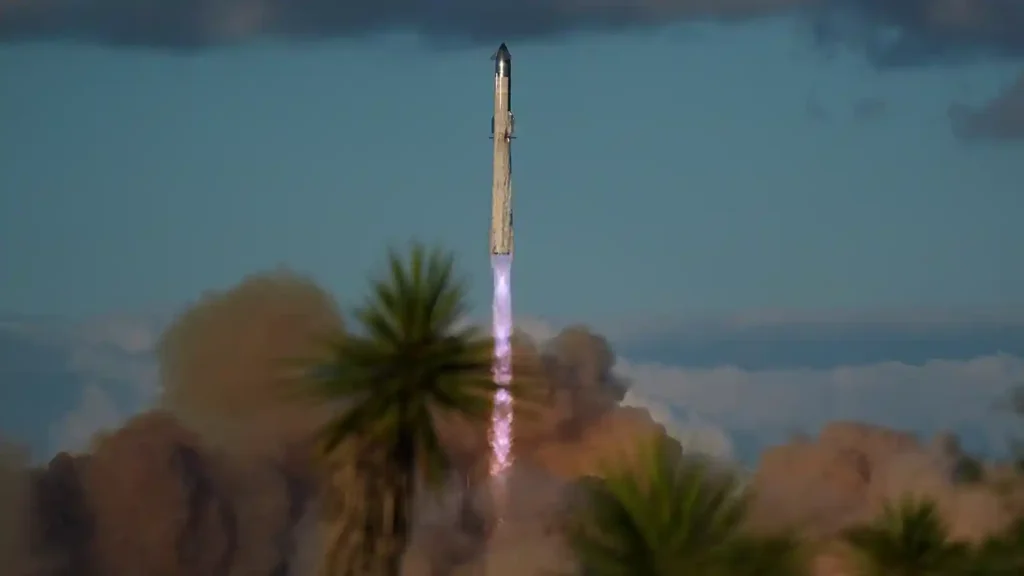
Despite Flight 11’s success, numerous technical challenges remain before Starship achieves operational status:
Heat shield reliability: Multiple test flights have experienced heat shield tile damage or loss during ascent or reentry. While spacecraft have successfully returned despite missing tiles, developing a robust thermal protection system that survives repeated missions without extensive refurbishment remains critical for rapid reusability.
Engine reliability: While Raptor engines have accumulated substantial test time, in-flight engine failures have occurred on multiple missions. Achieving the “airline-level reliability” SpaceX targets requires demonstrating consistent performance across hundreds of flights and thousands of engine starts.
Orbital refueling demonstration: This critical capability for lunar and Mars missions remains completely undemonstrated. SpaceX must develop and test propellant transfer systems, validate cryogenic fluid behavior in microgravity, and prove the concept works reliably before NASA will commit to missions depending on this technology.
Recovery and reusability validation: While the Flight 5 booster catch demonstrated feasibility, SpaceX must prove the concept works consistently and that caught vehicles can be rapidly inspected, serviced, and reflown. The spacecraft recovery system remains undemonstrated entirely.
Launch cadence acceleration: SpaceX’s ultimate vision requires launching multiple Starships per day, similar to airline operations. Achieving this requires solving numerous ground operations challenges including rapid propellant loading, vehicle checkout automation, and weather operations protocols.
Environmental compliance: Ongoing environmental reviews at Starbase and other launch sites may impose operational constraints on launch frequency, noise, and debris management. Balancing rapid development with environmental protection requires ongoing dialogue with regulatory agencies and affected communities.
Comparing Starship to Historical Launch Systems
To fully appreciate Starship’s significance, examining its place in spaceflight history provides valuable context. Every major rocket development represented a quantum leap in capability, enabling missions that were previously impossible:
Saturn V (1967-1973): NASA’s legendary Moon rocket stood 363 feet tall and could lift 310,000 pounds to low Earth orbit or 107,000 pounds to lunar orbit. It remains the only rocket to carry humans beyond Earth orbit. However, Saturn V was fully expendable, with every component discarded after a single use. The enormous cost per launch (over $1 billion in current dollars) made sustained operations economically impossible after the Apollo program ended.
Space Shuttle (1981-2011): NASA’s partially reusable spacecraft promised airline-like operations with rapid turnaround and low costs. The orbiter vehicle returned to Earth and flew up to 33 missions, but the external tank was discarded on each flight, and the solid rocket boosters required extensive refurbishment. Actual costs exceeded $1.5 billion per launch, far higher than projections. Safety concerns following two tragic accidents that killed 14 astronauts ultimately led to the program’s retirement.
Falcon Heavy (2018-present): SpaceX’s current heavy-lift rocket uses three Falcon 9 boosters strapped together, producing 5.1 million pounds of thrust. With booster reusability, launch costs range from $90 million to $150 million depending on whether customer payload requirements permit recovery. Falcon Heavy lifted 140,700 pounds to low Earth orbit on its debut flight, though reusable missions carry less payload.
Space Launch System (2022-present): NASA’s newest rocket for Artemis missions produces 8.8 million pounds of thrust and stands 322 feet tall. Like Saturn V, SLS is fully expendable, with costs exceeding $2 billion per launch when development costs are amortized. NASA’s current manifest projects only one SLS launch per year.
Starship dwarfs all previous systems in thrust, payload capacity, and physical size. More importantly, its full reusability targets costs orders of magnitude below any existing heavy-lift system. If SpaceX achieves even a fraction of its cost reduction goals, Starship will represent as significant a leap beyond previous rockets as jet airliners represented beyond propeller aircraft.
The Human Element: Who Will Fly on Starship?
While current test flights carry no crew, Starship’s ultimate purpose involves transporting people. Multiple groups have already secured reservations for future Starship missions, though timelines remain highly uncertain:
NASA Artemis astronauts: Four astronauts selected for Artemis III will become the first humans to fly aboard Starship, though they’ll transfer from Orion rather than launching from Earth aboard the vehicle. NASA has not yet officially announced crew assignments, though astronaut training for Starship operations has begun.
dearMoon project: Japanese billionaire Yusaku Maezawa purchased a private Starship circumlunar mission originally scheduled for 2023. The mission, which would take Maezawa and several artists around the Moon without landing, has been repeatedly postponed. In 2024, Maezawa reportedly canceled the project, though SpaceX has not officially confirmed the cancellation.
Jared Isaacman’s Polaris missions: The billionaire entrepreneur who commanded SpaceX’s Inspiration4 and Polaris Dawn missions has contracted for future Polaris missions that could include Starship flights. These missions would focus on testing technologies and procedures for deep space human operations.
Long-term Mars colonists: SpaceX’s ultimate vision involves thousands of people migrating to Mars aboard Starship fleets. Musk has suggested these colonists might include scientists, engineers, entrepreneurs, and eventually people from all professions needed to build and sustain a Martian city. However, this scenario remains decades away at minimum, dependent on first proving Starship’s capabilities for cargo missions.
Human spaceflight aboard Starship will require addressing numerous safety and habitability challenges beyond those facing cargo missions. Life support systems, emergency abort capabilities, radiation protection for deep space missions, and designing for long-duration comfort all require extensive development and testing before crewed operations begin.
Media Coverage and Public Perception
Starship test flights have become major media events, regularly trending on social media platforms and generating millions of views on livestreams. The spectacular visuals of the enormous rocket launching, the dramatic return and catch of Super Heavy, and even the explosive failures that occurred earlier in the program have captivated public attention in ways that routine spaceflight operations rarely achieve.
This public interest serves SpaceX’s broader mission of rekindling enthusiasm for space exploration. The company’s livestreams feature SpaceX employees cheering successful milestones, creating an atmosphere more reminiscent of sporting events than traditional aerospace operations. Critics sometimes characterize this approach as showmanship, but supporters argue that generating public excitement about space ultimately builds political and financial support for ambitious exploration programs.
Scientific and engineering communities have expressed mixed reactions to SpaceX’s approach. Some aerospace professionals admire the rapid iteration strategy and the willingness to test early and often despite failure risks. Others express concern about what they perceive as inadequate analysis and planning before test flights, potentially endangering people and property while setting concerning precedents for commercial spaceflight oversight.
International media coverage varies by region. American outlets typically frame Starship development as national achievement and technological prowess. Chinese media often emphasize their own space program’s accomplishments and question whether SpaceX will meet timelines for NASA’s lunar program. European coverage frequently focuses on environmental concerns and regulatory issues. This global diversity of perspectives reflects differing values regarding innovation, risk tolerance, environmental protection, and the role of private enterprise in activities traditionally conducted by governments.
Future Missions on the Horizon
SpaceX has outlined an aggressive testing campaign for the coming months and years, with Flight 12 expected to mark the debut of Version 3 hardware. The V3 test program will likely involve:
Initial validation flights: The first several V3 missions will focus on validating the new vehicle configuration, demonstrating that design changes perform as expected and that Raptor 3 engines operate reliably in flight conditions.
Booster catch refinement: SpaceX will likely attempt to catch Super Heavy boosters on most V3 missions, refining the precision of the maneuver and demonstrating consistency. The goal is to catch and refly boosters multiple times, proving the reusability concept beyond single demonstrations.
Ship recovery attempts: After validating V3 systems, SpaceX will progress toward attempting to catch Starship spacecraft at the launch tower. This will first require demonstrating highly precise atmospheric entry and descent control, followed by attempting the catch maneuver itself.
Orbital refueling demonstrations: Perhaps the most critical milestone involves demonstrating propellant transfer between two Starships in orbit. This will likely begin with smaller-scale transfer tests before progressing to full-scale refueling operations.
Extended duration missions: To prepare for lunar operations, Starship must demonstrate the ability to remain dormant in space for extended periods (weeks to months) while maintaining propellant temperature and quality. This requires validating active cooling systems and boil-off management.
Payload delivery demonstrations: SpaceX will eventually begin deploying actual satellites and cargo rather than simulators, demonstrating Starship’s utility for commercial missions. This might include deploying next-generation Starlink satellites or third-party payloads.
As V3 testing progresses and data accumulates, SpaceX will simultaneously build V4 prototypes incorporating further improvements. This overlapping development of multiple vehicle generations enables faster progress than traditional serial development approaches, though it also increases complexity and capital requirements.
The Business Case: Making the Numbers Work
SpaceX remains a private company, so detailed financial information about Starship development costs is not publicly available. However, various estimates and statements provide some insight into the program’s economics:
Elon Musk has stated that SpaceX invests approximately $2 billion per year in Starship development. Over the program’s roughly six-year intensive development period (2019-2025), this suggests total investment approaching $12 billion, though early years likely involved lower spending that has ramped up over time.
For comparison, NASA’s Space Launch System program has consumed over $25 billion from inception through the first operational flight according to NASA Office of Inspector General reports, with total costs likely to exceed $50 billion by the time the program concludes. Of course, SLS includes not just the rocket but also ground systems, integration facilities, and extensive NASA oversight infrastructure.
SpaceX must eventually recover these development costs through operational missions. At projected launch costs of $10-20 million per flight (Musk’s target for routine Starship operations), SpaceX would need to conduct hundreds or thousands of launches to recoup development investment. This business model only works if SpaceX can indeed achieve airline-like operations with rapid reusability, minimal refurbishment, and high flight rates.
The company’s revenue model likely depends on several sources:
NASA contracts: Beyond the Artemis HLS contract (valued at approximately $3 billion), NASA will likely award additional contracts for cargo delivery, propellant transport, and eventually crew rotation to lunar space stations or surface bases.
Starlink deployment: Using Starship to launch next-generation Starlink satellites could dramatically reduce SpaceX’s own satellite deployment costs while accelerating constellation buildout. Starlink subscribers now number in the millions, generating steady revenue that helps fund Starship development.
Commercial launches: Satellite operators, government customers, and potentially other customers will pay for Starship’s enormous payload capacity for missions that can benefit from deploying very large spacecraft or numerous satellites simultaneously.
Point-to-point Earth transport: Though highly speculative, very high-speed transportation for cargo or eventually passengers could represent a substantial market if regulatory and practical barriers can be overcome.
Tourism and private missions: Wealthy individuals and organizations might purchase complete Starship flights for circumlunar missions, space station visits, or eventually Mars expeditions.
Whether this business case ultimately proves viable remains uncertain. SpaceX has successfully transformed the launch industry once before through Falcon 9’s reusability, dramatically reducing costs and increasing launch frequency. Whether the company can repeat this achievement at Starship’s much larger scale represents one of the most significant questions facing the commercial space industry.
Lessons for the Broader Space Industry
Starship’s development provides numerous lessons relevant to other space programs and companies:
Rapid iteration over perfectionism: SpaceX’s willingness to fly hardware before every detail is perfected, accepting early failures as learning opportunities, contrasts sharply with traditional aerospace’s extensive analysis and simulation before first flights. The rapid iteration approach appears to produce functional vehicles faster, though whether it ultimately proves safer remains debatable.
Vertical integration and manufacturing innovation: SpaceX manufactures almost everything in-house, from engines to avionics to structures. This vertical integration enables faster decision-making and optimization across system interfaces. The company’s embrace of modern manufacturing techniques including extensive welding automation and additive manufacturing demonstrates how traditional aerospace manufacturing might evolve.
Public engagement and transparency: SpaceX’s livestreams, social media presence, and relatively open testing approach generate public interest and support that purely secretive development might not achieve. Other space companies have increasingly adopted similar approaches, recognizing public enthusiasm’s value.
Commercial models in government programs: NASA’s approach with Starship, where the space agency contracts with a commercial provider for specific services rather than managing all development, represents an evolution in how government space programs might operate. The success or failure of this model will influence future program structures.
Scale and ambition: Starship represents the most ambitious rocket development since Saturn V. The program demonstrates that truly revolutionary capabilities rather than incremental improvements can still attract investment and support, though the path to achieving revolutionary goals is rarely smooth or predictable.
Frequently Asked Questions
How powerful is the Starship megarocket compared to other rockets?
Starship generates over 17 million pounds of thrust at liftoff using 33 Raptor engines on its Super Heavy booster, making it roughly twice as powerful as NASA’s Saturn V Moon rocket and nearly twice as powerful as the current Space Launch System. This enormous thrust enables Starship to lift payloads exceeding 100 metric tons (220,000 pounds) to low Earth orbit in fully reusable configuration, far exceeding any previous rocket’s capabilities.
When will Starship carry astronauts to the Moon?
NASA currently plans to use Starship as the Human Landing System for Artemis III in mid-2027, though this timeline faces significant uncertainty. Starship must complete numerous unmanned test milestones including orbital refueling demonstrations before NASA will approve crewed operations. Many experts consider 2027 optimistic, with 2028-2029 representing more realistic timeframes if development continues progressing well.
Why does Starship use methane instead of traditional rocket fuel?
Starship burns liquid methane rather than the kerosene used by many rockets because methane offers several advantages for SpaceX’s long-term goals. Methane burns cleaner than kerosene, preventing carbon deposits that would complicate reusability. More significantly, methane can potentially be manufactured on Mars using the Sabatier process, combining Martian atmospheric carbon dioxide with hydrogen to produce methane fuel and water, enabling Starship to refuel on Mars for return trips to Earth.
How many times can Starship be reused?
SpaceX designs Starship for rapid reusability comparable to commercial aircraft, with minimal refurbishment between flights. The company targets flying each booster and spacecraft dozens or eventually hundreds of times. However, Starship has not yet demonstrated any reuse, as all test flights to date have concluded with intentional disposals. Proving and validating the reusability concept remains a primary focus of the ongoing test campaign.
What is the difference between Starship and Super Heavy?
Super Heavy is the first-stage booster that provides the initial thrust to lift Starship off the ground and through the thickest parts of Earth’s atmosphere. Standing 230 feet tall with 33 engines, Super Heavy separates about 2 minutes 45 seconds after launch and returns to the launch site. Starship is the second-stage spacecraft that continues into orbit or beyond, equipped with 6 engines. The complete stack of Super Heavy plus Starship stands 403 feet tall. Both stages are designed for full reusability.
How much does a Starship launch cost?
Official launch pricing has not been announced, as Starship remains in testing and is not yet available for commercial missions. Elon Musk has stated that operational costs could eventually reach as low as $10 million per launch once rapid reusability is achieved, though this represents an aspirational goal rather than current reality. Early operational missions will likely cost significantly more until flight rates increase and refurbishment processes are streamlined.
Can Starship really make Mars colonization possible?
Starship provides unprecedented payload capacity and the potential for low-cost transportation to Mars, which are necessary (though not sufficient) conditions for establishing a Mars colony. The vehicle’s methane-based propulsion system enabling refueling on Mars represents a key enabling capability. However, Mars colonization requires solving numerous challenges beyond transportation, including life support systems, radiation protection, in-situ resource utilization, habitats, food production, and establishing economic viability. Starship makes Mars colonization technically conceivable, but whether and when it becomes reality depends on far more than rocket capabilities alone.
What happens if a Raptor engine fails during flight?
Starship is designed with substantial engine redundancy to handle in-flight failures. The Super Heavy booster uses 33 engines but can complete its mission with several engines shut down. Similarly, the Starship spacecraft can continue to orbit and land with some engines out. Multiple test flights have successfully continued despite engine failures. However, if too many engines fail simultaneously or at critical mission phases, flight termination systems can destroy the vehicle to prevent uncontrolled impacts in populated areas.
Why does SpaceX catch boosters instead of landing them on legs?
Eliminating landing legs reduces vehicle mass, which translates directly into increased payload capacity. The mass saved by removing legs is substantial, potentially adding several tons to available payload. Additionally, catching boosters allows immediate inspection and servicing while suspended from the launch tower, potentially enabling much faster turnaround for reflights compared to vehicles that must be transported after landing. This approach also eliminates the need for dedicated landing pads at the launch site.
How does Starship’s heat shield work?
Starship uses thousands of ceramic tiles similar conceptually to Space Shuttle tiles, attached to the vehicle’s windward surfaces that experience extreme heating during reentry. These tiles are designed to be more robust and easier to maintain than Shuttle tiles, using improved materials and attachment systems. The tiles protect Starship’s stainless steel structure from temperatures exceeding 2,600 degrees Fahrenheit during reentry. SpaceX continues refining the heat shield design based on data from test flights, as tile adhesion and durability remain active development areas.
Conclusion: A Transformative Moment in Spaceflight History
Flight 11’s success represents more than another test mission completed. It marks a potential inflection point where Starship transitions from experimental technology to operational capability. The path ahead remains long, with substantial technical challenges still to overcome and no guarantee of ultimate success. Yet the progress demonstrated provides concrete evidence that SpaceX’s audacious vision of fully reusable super-heavy-lift rockets may indeed be achievable.
If Starship reaches operational maturity and delivers on its promise of dramatically reduced launch costs and unprecedented payload capacity, the implications extend far beyond any single mission or program. The vehicle could enable a fundamental expansion of humanity’s presence and activities in space, making the Moon and Mars accessible in ways previously confined to science fiction.
The next months and years will prove critical as SpaceX pushes toward orbital refueling demonstrations, successful spacecraft recovery, and ultimately operational missions carrying real payloads and eventually passengers. Success is far from assured, but the company’s track record of converting seemingly impossible goals into routine operations suggests betting against SpaceX may be unwise.
Whether one views Starship as humanity’s path to becoming a multi-planetary species, a revolutionary commercial transportation system, or an overambitious moonshot that may ultimately fall short of its loftiest goals, few can dispute that we are witnessing something genuinely new in aerospace engineering. The megarocket that thundered off the pad on October 13, 2025, carries not just propellant and test objectives but the weight of transformative possibilities for human civilization’s relationship with space.
Additional Resources and Technical References
Official SpaceX Information:
- SpaceX Starship Page – Official specifications and updates
- SpaceX Twitter/X Feed – Real-time mission updates and announcements
NASA Artemis Program:
- NASA Artemis – Official program information and timeline
- Human Landing System Details – Starship’s role in lunar missions
Technical Deep Dives:
- Wikipedia: SpaceX Starship – Comprehensive technical history and specifications
- Wikipedia: Raptor Engine – Detailed engine specifications and development history
Space News Coverage:
- Space.com Starship Coverage – Latest news and analysis
- NASASpaceflight.com – In-depth technical coverage and live launch streams
- Ars Technica Space – Expert analysis and reporting
Regulatory Information:
- FAA Commercial Space Transportation – Launch licensing and regulations
- Federal Register: SpaceX Starbase Environmental Assessment – Environmental review documents
Academic and Technical Analysis:
- AIAA (American Institute of Aeronautics and Astronautics) – Technical papers on reusable launch systems
- The Planetary Society – Space exploration advocacy and analysis

